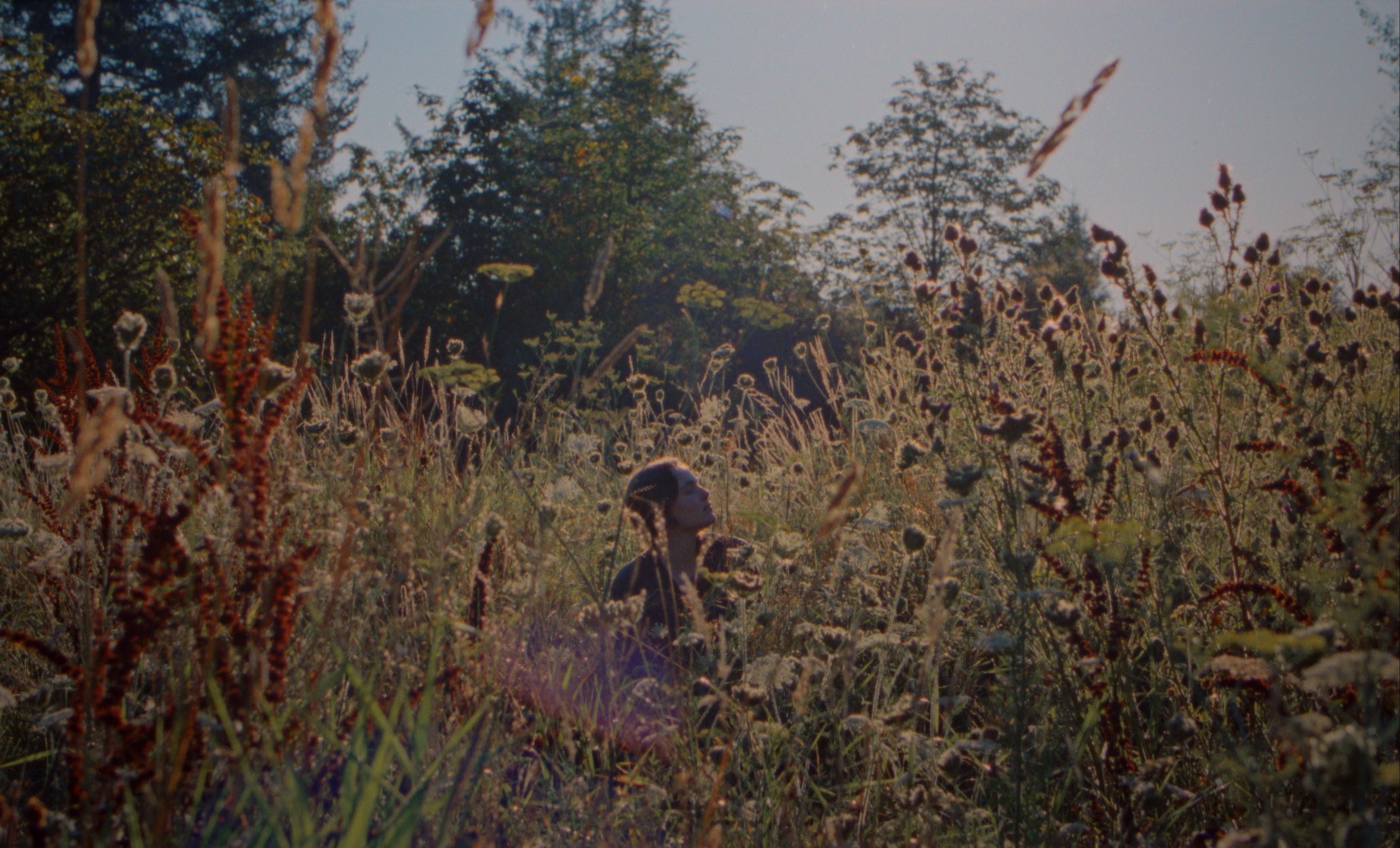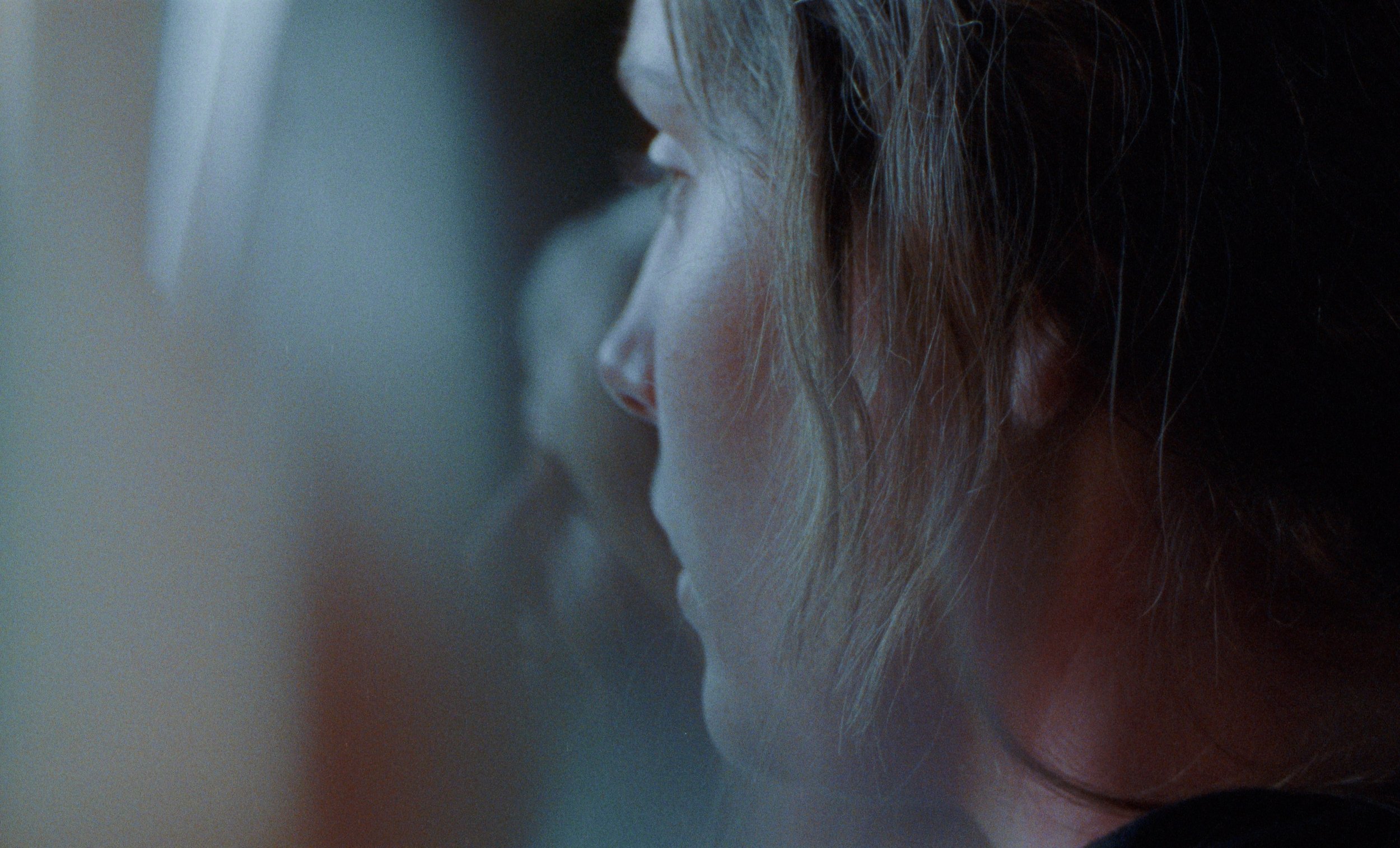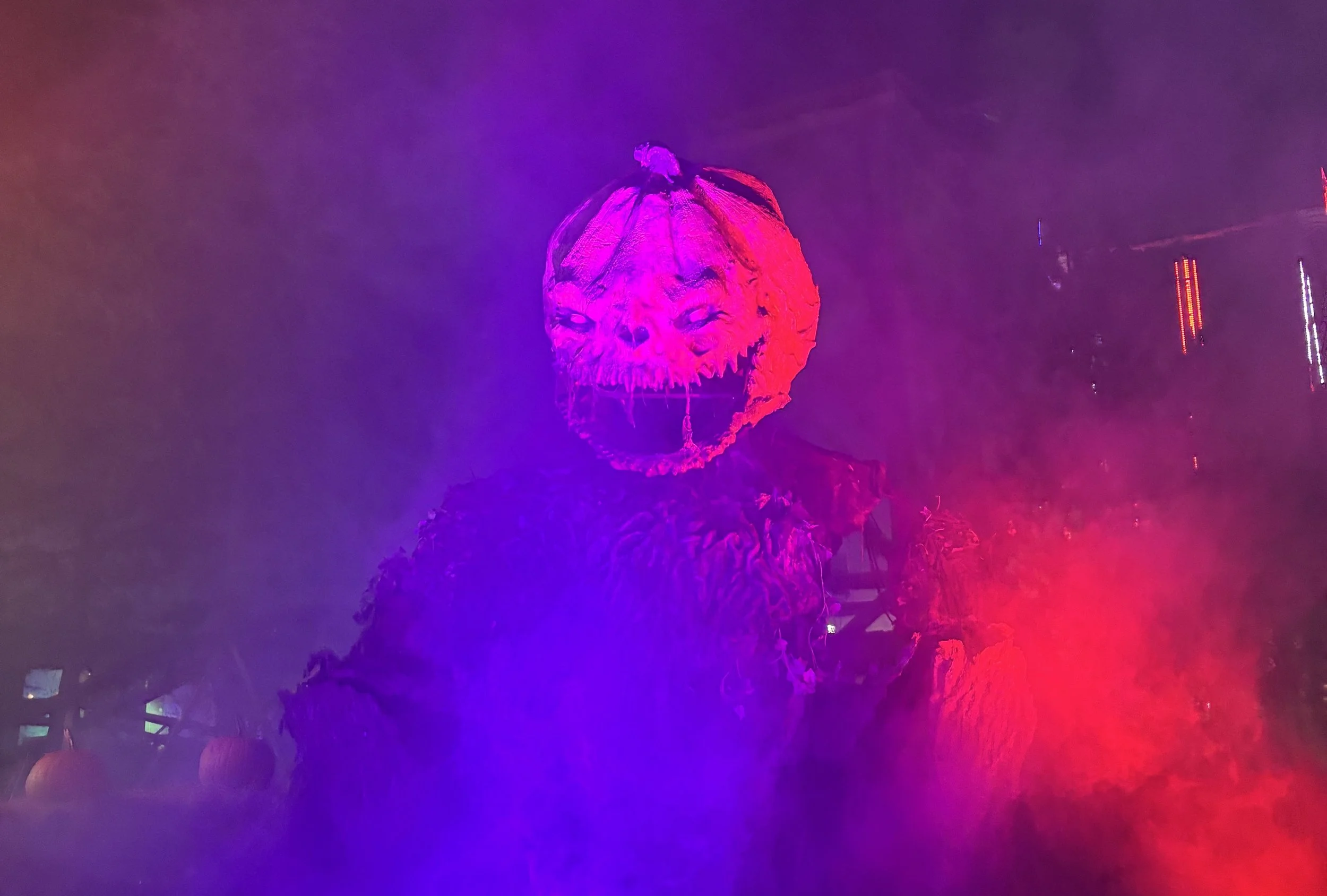No Comfort in Community: Loneliness and Fanaticism in Liz Cairn's Inedia
/Film still from inedia (dir. liz cairns, 2024)
“Hunger is a wound of desire.”
Decreed by the seemingly harmless guru of a commune nourished by the sun, this statement sets the tone for a film that hungers for connection, yet centers characters that can’t help but seek it in the wrong place. Immediately, the warm and intimate feel of Liz Cairn’s film is set in stark contrast with the uncanny music and ominous narration, creating a sense of unease that doesn’t quite leave you, even when a false sense of comfort permeates the commune and its members. While one might feel mesmerized by the assumed wisdom and piercing eyes of the cult’s leader, Joana, her gentle tone never really drowns out the damning effect of her mandates. Though the only one in the community to question the abandonment of food in search of astral nourishment is a writer that visits the community, anyone that keeps up with cult documentaries would hopefully think twice before converting to this way of life. And it is indeed a way of life. Beyond the fictional realm of Inedia, breatharians claim to thrive on air and sunlight alone, and as the film progresses the ominous presence of this light is felt heavily on the screen.
Kirsten Danae: Light plays a big role in this film. How did you approach filming in order to obtain the desired exposure and shots? Did you find particular times in the day better for filming, or did editing play a big part in the whimsical feel of the film?
Liz Cairns: When Cora first arrives at Sun Haven, the leader of the community, Joana, describes a profound and mystical encounter with a figure of light, and that continues to taunt Cora throughout the film. The light motif was meant to reflect a sort of amorphous and elusive ideal of both wellbeing and spiritual ascension, which Cora, as well as other characters in the film, are striving for. I credit Jeremy Cox, our cinematographer, for helping me enact this motif and sculpting light so beautifully throughout the film. We were able to go to some of our locations in prep, getting a feeling for the light and how it moves through the space throughout the day. Jeremy has an app called Sun Surveyor, which he used to map where the sun would be at any given time. That was always on his mind, and we did our best to build that into the schedule. It’s not always possible, since there are so many other considerations, but Jeremy helped me realize ‘light’ as another character in the film.
Film still from the movie inedia (Dir. liz cairns, 2024).
Inedia is not just another cult movie, however. It is a film that depicts the downward spiral of one girl drawn into a world of overzealous belief and performative altruism, rather than dramatizing the more horrific aspects of life in a commune. Joana understands her subjects very well, which is how she’s able to build her community in the first place. But her cognizance proves dangerous when her followers gradually succumb to starvation. Cora’s ‘attachment to food’, as Joana puts it, appears to simultaneously frustrate and intrigue Joana, as it makes Cora’s conversion more challenging. Yet there are moments in the film where one can’t help but wonder if Joana’s frustrations lie elsewhere. Not in Cora’s own deficiencies, but in the way these remind her of the human flaws she abhors, but cannot quite shake herself.
KD: Which character was more difficult to cast? Was there anyone that you felt sure about from the first audition or even tweaked a character for?
LC: I’m not sure it was difficult—but it was high stakes casting Cora. We needed to cast the right lead, or the film would fall apart. We were working with a US casting director and there was some pressure to cast a star given that we were still trying to raise money for the film. There was a young actor who’d had a recent breakout role. We made an offer, but she turned it down after a promising initial response. I began to watch the audition tapes that were rolling in. There were some astonishing performances, and I loved seeing different perspectives and reads of the two scenes we sent out. There were so many talented young actors in the bunch, but I wasn’t seeing ‘Cora’. We panicked, and put out another offer to a huge star. That night, I couldn’t sleep. I knew that the actor was wrong for the role, and I was desperate for her to turn it down. I started watching audition tapes day and night. I was growing more and more worried until I got to Amy Forsyth’s tape. It took my breath away. Her read of the scene was so understated and yet moving, captivating, with pain just under the surface. I watched it again and again. We still had that offer out to the other star, and I said a prayer, wishing for her to turn it down. My prayers came true. I requested a meeting with Amy and fell in love with her.
Film still from the movie inedia (Dir. liz cairns, 2024).
As you become acquainted with Cora, the film’s protagonist and Joana’s latest follower, you start to realize that many of these ‘light’ followers are united by grief, and in their search for community and vitality find their bodies crumbling while their souls become lost in the fray of fanaticism. The film might not be so loud in its delivery, but it is truly in the quiet moments that the film says the most. Though it can be difficult to portray a passive character like Cora while communicating the full extent of her emotions, actress Amy Forsyth drives the protagonist’s inner dialogue onto the screen with expert finesse. In the intimate close-up shots of her, the viewer is able to catch every slight disfigurement of her face and wariness behind her eyes. You feel her aversion to food, and her difficulty connecting with the people around her. Before she joins the light-eaters, Cora is captured alone, again and again. As the camera closes in on her through a slit of the open door, grimacing from the pain of her eczema flare-ups, the viewer understands that beyond her obsession lies a crippling sense of desolation.
Film still from the movie inedia (Dir. liz cairns, 2024)
Cora’s struggles are seen not only in the emotions that play across her face, but also in the recurring imagery of food, underscoring her obsession. Her binges are punctuated by the scraping sounds of cutlery in an otherwise silent room, and her hyperfixation really comes to a climax under the light of the moon as she joins Joana in a feast where no food is consumed. Thus, it becomes more evident than ever how her obsession is heightened by Joana’s harmful doctrine.
KD: This film deals with sensitive subject matter, particularly when it comes to disordered eating and the emotional toll it takes on a person. How did you decide what to include or leave out of the film?
LC: I had an eating disorder when I was young and through much of my 20s. Despite my lived experience, I was fearful of how I would reflect an ED on screen, particularly given how complex and unique they are to each individual, and with the risk of causing harm by representing them in certain ways or by showing certain behaviours. I drew on the National Eating Disorder Association’s Guidelines for Responsible Media Coverage, and read a number of other resources depicting disordered eating. There was a point in the writing process when I wanted to quit. I felt overwhelmed by the responsibility of getting it ‘right’. I moved forward by staying grounded in reflecting my own experiences (of course, with some fictionalizing, as I’ve never been in a cult). For some time, I shied away from the more uncomfortable aspects of disordered eating that are depicted in the final film. It was through the support of friends and collaborators throughout this process encouraging me to reflect Cora's journey with honesty and authenticity, which the film needed. Once I had a script I felt ready to shoot, we had another challenge of creating a safe space for actors who have to inhabit and perform this difficult subject matter. We worked with an intimacy coordinator, Tolmie Greaves, who supported the actors (and me) during scenes that involve sensitive material. In the editing room, my editor Lisa and I were in an ongoing dialogue around when to push and when to pull back. We were able to have a test screening followed by a conversation, which was the first time I felt we’d found a balance between care and discomfort. That said, everyone will be unique in how they relate to the material, particularly viewers who have lived experiences with disordered eating. Content warnings are vital for this film and a viewer with a history of disordered eating should take care as recovery is fragile.
Film still from the movie inedia (Dir. liz cairns, 2024).
The film zeroes in on the characters who are touched by Joana’s ‘spiritual’ doctrine, depicting intimate female friendships that are intensified due to their shared experience. Yet these bonds prove fragile when the lies they are fed on an empty stomach hinder their progress. In the lamplight, Cora and December share deep conversations that scream sisterhood, but in the light of day Cora watches young Mary attempt to bury an infant alive in the hopes of ‘planting him like a flower’. Mary’s playful burial highlights the sinister undertones of Joana’s seemingly peaceful commune, shining a light on the cracks beginning to show in the same group of people responsible for her own mother’s disappearance. The cast thrives in their depiction of emotional turmoil, sharing in the silent pains of their lost souls and starving bodies, but the film still leaves some questions unanswered. While one may speculate on the cause of Mary’s mother’s ‘disappearance’, Joana’s intentions and even Cora’s objective after leaving the eerie community, a concrete answer remains out of reach.
Film still from the movie inedia (Dir. liz cairns, 2024).
KD: Despite not being a horror film, Inedia has, at times, an almost indescribable sinister feel. Did you employ any special cinematic techniques or encourage certain acting choices to achieve this?
LC: I wanted to strike a balance between a lush and beautiful landscape and environs, though with a subterranean unease, reflecting the distinction between one’s outward appearance and internal pain. That distinction textured many creative choices. For example, the ripe fruit which is later decaying and rotten. The subject matter we were filming was dark and there was often a feeling of unease on set because we were always running behind schedule, running out of film, and tensions were high as a result. I’m sure that energy fed an overall sinister feeling that is now etched on screen.
For a film defined by light, Inedia is replete with shots edged in shadow, embodying the fear, anxiety, and loneliness that consume Cora, making the promise of spiritual ascension increasingly appealing. While the absence of food in Joana’s Breatharian community initially appears to offer a path towards healing, Cora’s relapse shows the depth and damage of her disorder. Depicting an eating disorder on screen with both tact and depth is no easy feat, but it is something Liz pulls off without question.
KD: Though Inedia could be a difficult watch, its simultaneous boldness and sensitivity in its approach to disordered eating is sure to touch many viewers. Why do you feel like the world needs Inedia today?
LC: I’ve heard many times over the years that we should make the films we want to see. This was my anchor throughout the making of Inedia. Growing up, if eating disorders were reflected in film or TV, they were reductive, which only buried me deeper in my shame. They are far more complex and invisible, with many suffering in solitude. It took years before I felt comfortable opening up, and in doing so, I’ve come to recognize how many people struggle with complex relationships with food. There is a lot of research out there and many different lenses on EDs—biological, sociocultural, psychological etc. I read long ago that eating disorders are a symptom of a sick society, and that has stayed with me. As someone who has had complex health issues over the years, with difficulty navigating our fraught health care system, food becomes the first site of fixation. We live in a time when food is no longer food. We have to read labels and research everything on our plate before we can ingest it. I wrote Inedia, and particularly Cora as a character, to reflect my own experiences and perspectives around the shame and isolation of living with an eating disorder, brought on by complex health issues and distrust of food, and the immense uncertainty one faces on the path to wellbeing. I hope for the film to connect with viewers who see themselves in Cora and to open up to one another around our complicated relationship with nourishment. The community reflected in the film is flawed, but there’s some complexity there for me, because I believe community is vital to our wellbeing.
Film still from the movie inedia (Dir. liz cairns, 2024).
Inedia was by no means an easy watch, but in a world obsessed with true crime documentaries it stands out as a sensitive, yet bold, portrayal of the people drawn to fanatical communities…and the grief that unites them.
The film opens July 4 at the VIFF Centre and has a special one-night-only screening on June 28 as part of VIFF’s Live! series featuring a live performance by Jesse Zubot, who co-composed the film’s haunting score, with his brother Josh.
This interview has been edited for clarity and brevity.
Kirsten Danae (she/her) is a writer with a passion for film and the occasional excess in caffeine. She grew up in Mexico before moving to Vancouver to study English and Creative Writing at the University of British Columbia, and in her free time enjoys watching and reviewing movies so she can write one herself someday. Follow her on IG @keeks_diner












